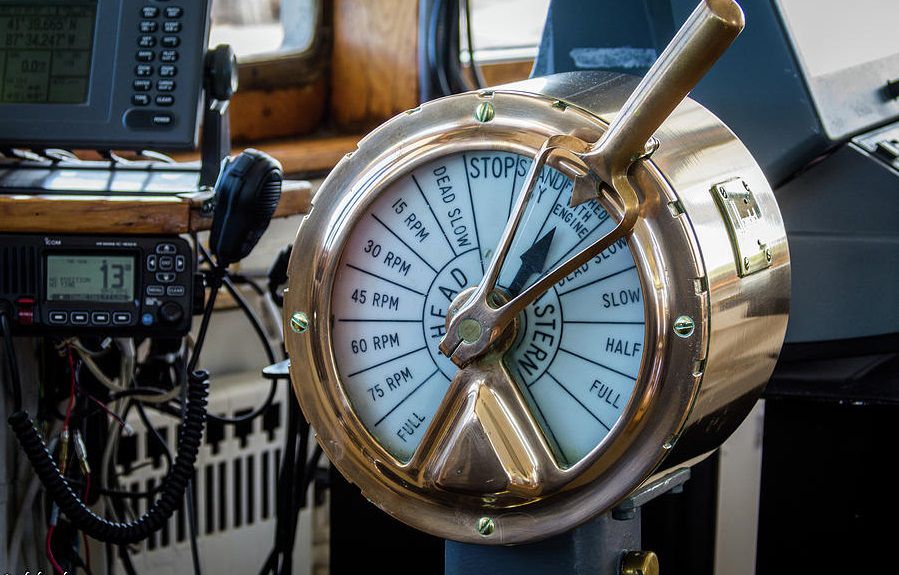In a sea going vessel, navigational officers control the ship’s navigation system from bridge and engineering officers control the propulsion plant from the engine room. Bridge is right on top of the ship, hence the officer on the bridge does not know about the condition of the propelling engine and marine engineer in the engine control room does not knows where the ship is heading as the engine room is situated below the water line of the ship. Hence a fail-safe communication is required in between the navigation and engineer officer to ensure smooth and safe sailing of the ship.
As the word describes, the telegraph on board ship is used as a communicating device to transfer orders of change in speed or direction from the bridge to the engine control room.
The engine order telegraph consists of a lever which can be moved over different speed positions for ahead and astern direction.

Location of Engine Telegraph
The telegraph and its bell, also known as telegraph bell, are located both in the engine control room (ECR) and the bridge. A responsible officer from each of the departments handles the telegraph from these locations. One more telegraph is located on the emergency manoeuvring or local manoeuvring station of the main engine. There is a changeover switch located in the ECR for telegraph selection which can be manually or automatically changed between the local control and engine control room telegraph.
Different Position on Engine Telegraph
Ahead Direction Movements:
· Navigation full
· Full Ahead
· Half Ahead
· Slow Ahead
· Dead Slow Ahead
· Stop
Astern direction movements:
· Dead slow astern
· Slow Astern
· Half Astern
· Full Astern
· Emergency Astern
Engine Telegraph Operation
The initial movement of telegraph is always from the navigation bridge and is done by moving the lever in the required direction, which rings the telegraph bell of both the locations (Engine room and Bridge). After hearing the bell, the engineer officer acknowledges the telegraph of the engine room to the same position as that of the bridge which stops the ringing of the bell. This ensures that the correct movement is acknowledged and the engine speed and direction is controlled accordingly.
In modern ships with automation and controls, the bridge telegraph is directly connected with the engine controls and it doesn’t require involvement of engine room personnel. Such type of telegraph is called remote controlled telegraph device. A provision is given to link both the telegraph so that manual operations can also be carried out in case of automation failure.



Comments are closed